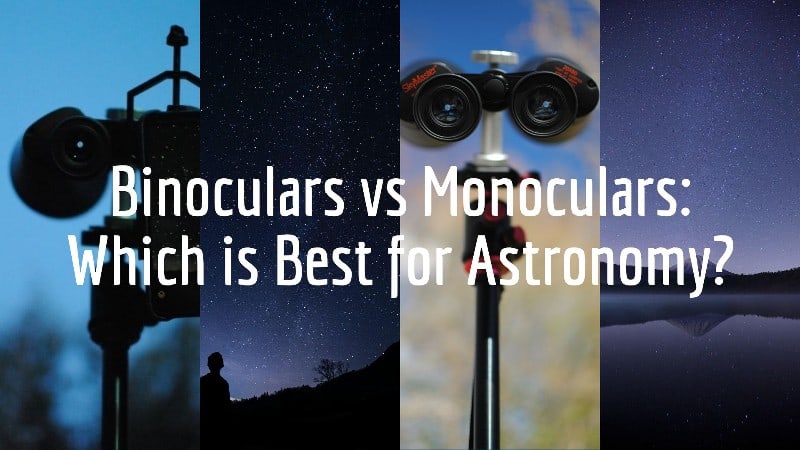Binoculars and monoculars can both be used for astronomy and stargazing.
But what are the differences and what is best for night sky viewing and astrophotography?
We have written this guide from an astronomy perspective, but many of the pros and cons will be applicable for other pursuits like bird-watching, hunting or shooting, etc.
Read on to understand all you need to know about monoculars vs binoculars.
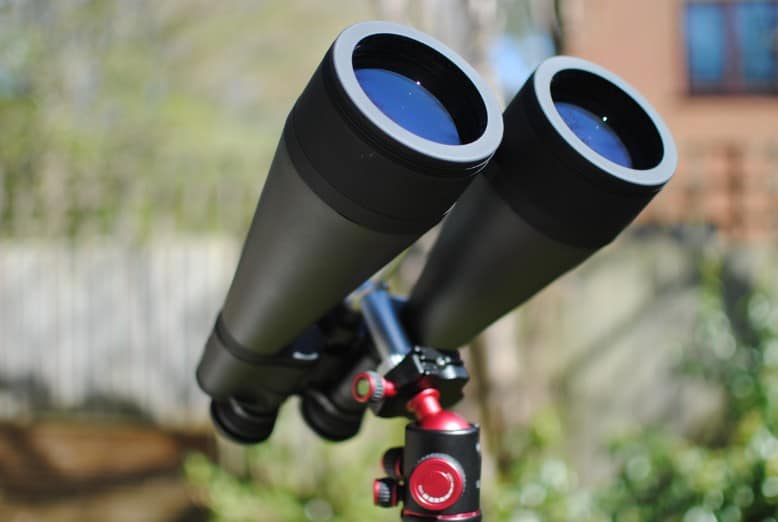
Monoculars vs Binoculars
A monocular is essentially one half of a binocular – or a binocular is two monoculars constructed together – however you want to look at it.
This means that they are the same optical devices but for use either with one eye (monoculars) or two eyes (binoculars).
There are implications for this for astronomical use, and there are other key differences between them that we shall explore to determine what is best for you.
First let’s clarify what monoculars and binoculars are, and then examine the key differences.
Monocular
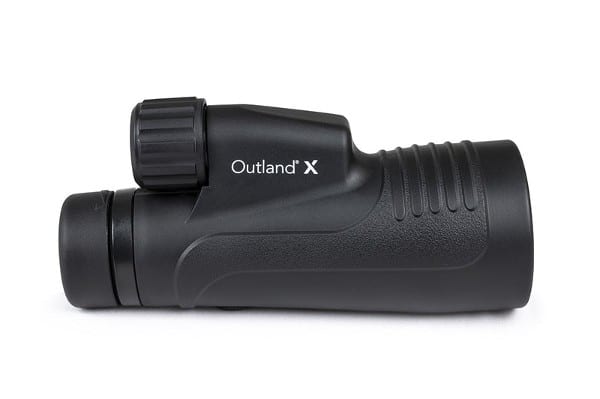
A monocular is essentially a mini handheld telescope.
They are very simple devices that do not have any additional components like you get with telescopes, like eyepieces, etc.
Binoculars
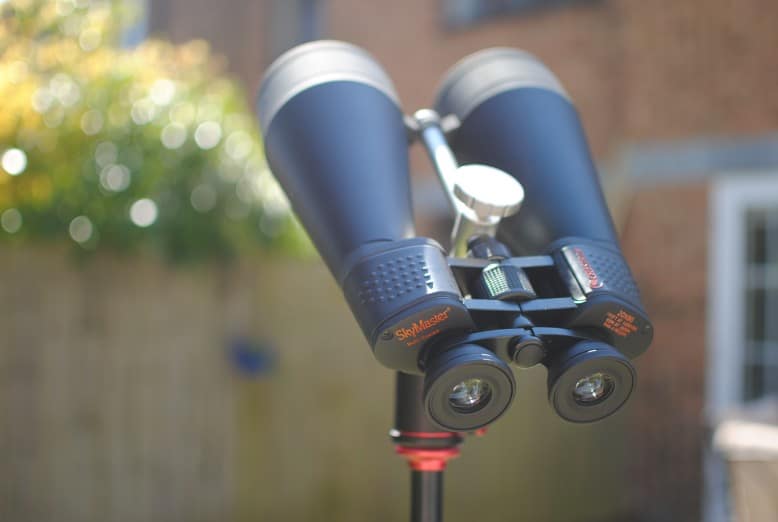
Binoculars are optical devices that are used with both eyes and can be handheld, but larger astronomy models should be used with tripods.
Differences Between Monoculars and Binoculars
The key differences between monoculars and binoculars are:
- Size and weight: Monoculars are much smaller and lighter than binoculars.
- Portability: Monoculars are more portable than binoculars due to their smaller size and weight and can fit into your pocket. Binoculars will need to be carried in a case or bag.
- Price: Monoculars are cheaper than binoculars, owing to the fact that they contain fewer materials and components.
- Aperture: Binoculars tend to have a larger objective lens diameter than monoculars. This makes for brighter and clearer views which is especially important for stargazing. Astronomy binocular aperture ranges from 50mm to 150mm. The small, handheld nature of monoculars means that the aperture is limited to a range of 12mm to 50mm.
- Magnification: Monocular magnification is smaller, ranging from 3x to 12x (but can go up to 20x). Binocular magnification can be much higher, ranging from 7x to 25x for astronomy binoculars. Any magnification above 10x for monoculars or binoculars will mean they will have to be used with a tripod or else the handheld shakiness will make them unusable.
- Signal-to-noise ratio: When using just one eye you decrease your signal-to-noise ratio and this degrades your vision of the night sky. This is just like image stacking in astrophotography where you overlay two largely identical images and reduce the noise and make the stars “pop” out more. Therefore binoculars are better suited to night sky viewing.
- Eye relief: Monoculars have shorter eye relief than binoculars. This means they have to be held closer to your eye and can be a problem for glasses wearers.
- Eye fatigue: Binocular use is more comfortable for extended periods as with a monocular you have to close one eye.
Note that there will be exceptions to these, with some monoculars more expensive than some binoculars, or with higher aperture/magnification, etc.
Monocular vs Binocular Pros and Cons
This then translates into the below pros and cons for binoculars vs monoculars.
The advantages of binoculars are:
- Higher aperture and magnification for better optics
- Better signal-to-noise ratio for night sky viewing
- Use with two eyes is more comfortable
The downsides of binoculars are:
- Larger, heavier and less portable
- More expensive
- Larger models need to be used with a tripod
The advantages of monoculars are:
- Small and light
- Easily fit into your pocket for perfect portability
- Cheaper
- Suitable for someone who has visual impairment in one eye
The downsides of monoculars are:
- Limited optical capacity with smaller aperture and magnification
- Less comfortable to use as you have to close one eye
This video gives a good overview of binoculars vs monoculars from a non-astronomy perspective:
Monoculars vs Binoculars for Astronomy
Binoculars are better for astronomy than monoculars because:
- the higher aperture gives better views
- the signal-to-noise ratio of using both eyes gives better night sky images
- the better comfort of using binoculars for extended stargazing sessions
There are also a good number of astronomy binoculars that are constructed specifically for that pursuit.
See the Best Binoculars for Astronomy to see the recommended models.
Monoculars are not as suited for astronomy because of their handheld nature and lower key specifications like aperture.
However, they can be great for casual stargazing and have the advantage of being small and light enough to just slip in your pocket and be taken out on walks or camping.
There are also some higher-powered models that better suit astronomy. See here the Best Monoculars for Stargazing & Astrophotography.
Monoculars vs Binoculars for Astrophotography
Binoculars can even be used for astrophotography using smartphone adapters as you can see here in my backyard:
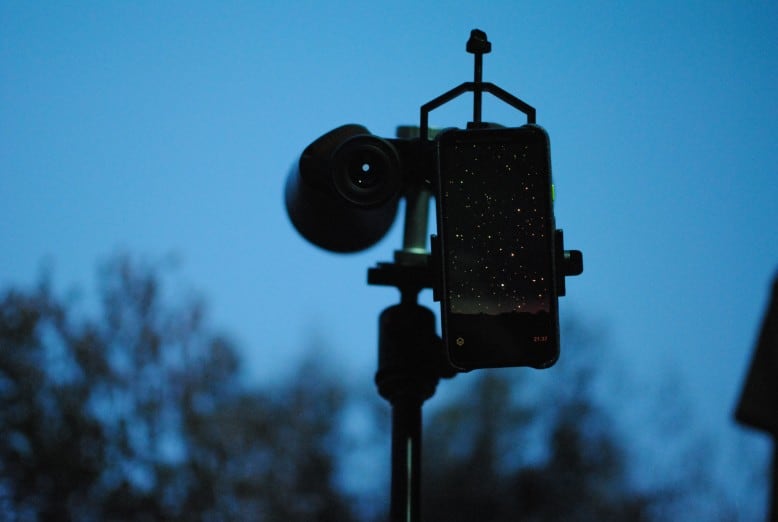
With this, you are obviously just using one of the eyepieces and so is essentially the same as doing this with a monocular.
The difference is the higher aperture and magnification of astronomy binoculars give you more power and a better imaging capacity.
Monoculars in general are designed for handheld use and so do not suit photography or astrophotography.
However, there are some high aperture and magnification monoculars like the Celestron 20x50mm Outland Monoculars that come with mini-tripod and smartphone adaptor and so can also be used for taking photos.
Binocular vs Monocular: Final Verdict
Overall, binoculars are better for pursuits where you are going to be using them for an extended period of time.
Monoculars are better for shorter and less frequent use, where perhaps you have them in your pocket when hiking and can pull them out when you want.
Specifically for astronomy and stargazing, binoculars are better due to their higher aperture and the improved signal-to-noise ratio of using two eyes when looking at the night sky.
There are some good monoculars that can be used for astronomy though and they are more portable and cheaper.
Related articles:


